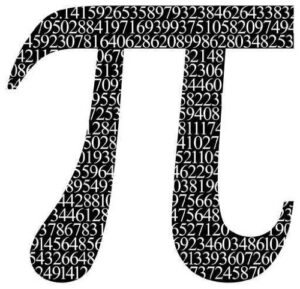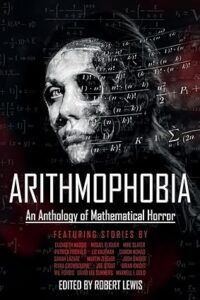
Elizabeth Massie’s works are mostly in the horror genre. Her debut novel, Sineater, and her novella, Stephen have both won the Bram Stoker Award. I was surprised to discover that she also writes historical fiction and educational books for children (including Rigby readers– so if you have elementary aged children they may have read one of her books already) but she also writes mainstream fiction, media tie-ins and poetry. Her Tudors novelization (season 3) won the Scribe Award. She is now working on Ameri-Scares (Crossroad Press), a 50 novel series of spooky books for middle grade readers (a few of these are available on Kindle), as well as new novels and short works for adults. Her short story “Abed” has been made into a short film. Her most recent works include the novels Hell Gate (DarkFuse, 2013) ) and Desper Hollow (Apex Books, 2013).
1. Can you give our readers a brief introduction?
I’m a ninth generation Virginian…not a deep Southerner as in Spanish moss, ‘gators, and bayous, but more of a “bless your heart,” don’t-honk-your-car-horn-at-someone-unless-he’s-getting-ready-to-run-into-you, and eat Sunday lunch at Grandma’s house kind of Southern. I live in the country four miles from where I was born, so you could say I’m rooted. Of course, you could say lots of other stuff, too, but let’s move on.
I have written stories since I was old enough to hold a pencil, and I love stories in all their forms…books, magazines, plays, film, dance, mime– well, not so much mime. I don’t have an e-book reader but might get one some day. Anyhoo, I’ve been writing and selling horror fiction since the mid-1980’s. My first two short stories were published by the great, legendary magazine, The Horror Show, edited by David Silva. Since then, I’ve had published nine horror novels for adults, four horror novels for younger readers, six collections of horror fiction, and more than 100 short stories in various magazines and anthologies. I also write tons of other stuff, too, but again, let’s move on.
2. Why do you write horror? What draws you to the genre?
I was a scaredey-cat at a kid. Ultra-sensitive to the world around me. I don’t mean I just sat in the corner and screamed, but it was like going around with a layer of skin rubbed off. Frightening things were everywhere. There was a witch who lived down the street. There was a creepy family who lived across the street, a family we as kids knew would kidnap you and lock you in their attic if you crossed their lawn. There was a disembodied head that lived on top of the radiator in my bedroom, but only at night. There were things in the shadows in the basement that had no form but were just as happy to catch you and chew you up.
And so I’m thinking I got into writing horror because it gave me a way to look at a scary thing and deal with it and sometimes figure a way out of it or even defeat it. In fact, one of my more recent collections– Sundown (Necon E-books) – is dedicated to “All Who Stare Long and Hard into the Darkness to Better Appreciate the Light.” But then again, maybe there are other reasons I, and people like me, write horror. Reasons we’ll never really understand.
3. Can you describe your writing style or the tone you prefer to set for your stories?
It really depends on the story, the market, and my mood when I come up with an idea. More often than not, I write horror that is more character-driven and introspective. I do that because, for the most part, it’s the kind of horror I like to read. Now, I don’t mean soft or mild horror. For example, my short story “Abed” (originally published in Still Dead and now a short film by Ryan Lieske) has been called “one of the most disturbing horror stories ever written.” Yet, it is not a slam-bam, action-packed tale. It’s claustrophobic and terrifying and actually quite sad. That said, I can write– and have written– slam-bam, action-packed horror, too, when that seems to suit the story.
 
4. Who are some of your influences? Are there any women authors who have particularly inspired you to write?
I’m influenced one way or other by most everyone I’ve read. Either, “That person can really write!” and so what can I learn from her/him? Or “That story or novel pretty much sucks!” and so what can I learn that?
Growing up in the 50’s and 60’s, I adored several kids’ mystery series like The Happy Hollisters (Jerry West) and Trixie Belden (originally Julie Campbell but then in-house writers picked it up – most likely women and men, both.) By the time I was ten, I was seeking out scary things to read, like the old Alfred Hitchcock anthologies (such as the Ghostly Gallery) and Gold Key’s The Twilight Zone comic books. In looking back, it seems most if not all the Alfred Hitchcock stories were penned by men. From what I can tell, The Twilight Zone comics were written and illustrated by men.
As a young teen I went on to read adult horror and science fiction novels by men such as Ray Bradbury, John Hersey, Julian Gloag, and Robert Bloch. I didn’t discover women horror writers until I was a young adult– Shirley Jackson and Flannery O’Connor, primarily. They seemed like an afterthought among all the male authors. Yet, that imbalance didn’t strike me at the time. I wasn’t tuned into the gender discrepancy. I guess I was more about what made an engaging, terrifying, story rather than if the author was male or female.
So as to which women authors inspired me to write, I’d have to say none, really. I started writing very early… stories were inside me that needed to be told. Then again, maybe I was inspired by every female author I ever read whose name didn’t register on my radar because I was more concerned with the story than with who wrote it.
I was and continue to be inspired by good writing, whomever it is who creates it.
5. What authors do you like to read? Any recommendations?
These days, more women are writing horror than when I was growing up. Or at least more are being published than when I was growing up. I think there will always be more men in the field, though, because I think men generally are more interested in horror than women. It’s just an observation… few women I know (and I know quite a few) enjoy and seek out horror. Many more men friends do. Is that me being naïve or sexist toward my own sex? I don’t think so. But because fewer women are in the field, they do tend to get overlooked more often. There aren’t as many books by “us” on the shelves. And it could be that some readers think women won’t attack horror as boldly as men.
That said, let me recommend the writings of Lisa Mannetti, Billie Sue Mosiman, Nancy Holder, Nancy Kilpatrick, Poppy Z. Brite (now Billy Martin), Yvonne Navarro, Linda Addison, Chesya Burke, Lisa Morton, Monica O’Rourke, Fran Friel, Rhodi Hawk, and Mary SanGiovanni, as well as others, have impressed me as both a reader and a writer. Their works are deep, thought-provoking, memorable, gritty, and scary as all hell. These women deserve more bookshelf space.
6. Where can readers find your work?
My most recent works include the novels Hell Gate (DarkFuse, 2013) ) and Desper Hollow (Apex Books, 2013). I also have short stories out in the 2013 magazine Dark Discoveries #25 and the 2013 anthology Shadow Masters. My website has more listings: www.elizabethmassie.com
7. Is there anything else you’d like to share with librarians and readers?
Sometimes we have to look beyond what publishers push and promote to find other gems among the offerings. They are there, and they may be the surprise we were looking for. And someday, we won’t need a Women in Horror month. Those who write well will be as much in the public eye as their male counterparts, and the gender of an author writing horror won’t be a defining issue anymore.
____
Want to learn more or check out her work? Visit Elizabeth Massie’s Amazon page, her website, or this article on Wikipedia, which, although it doesn’t have multiple sources, does provide biographical information and a fairly comprehensive, easy to read list of her works.
Come visit again soon! We have a great post coming up soon from librarian Becky Siegel Spratford, queen of reader’s advisory in the horror genre– you won’t want to miss it!








Follow Us!